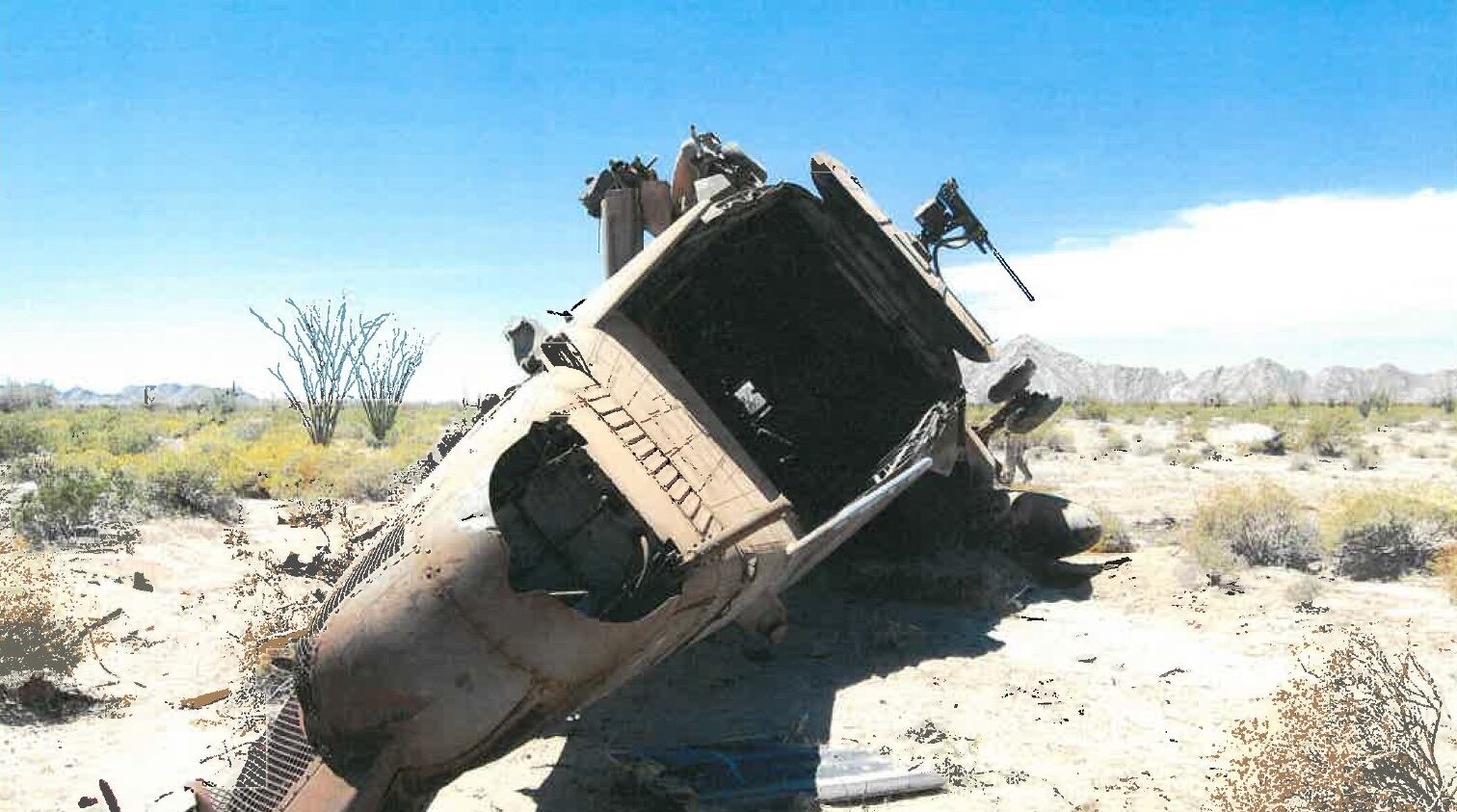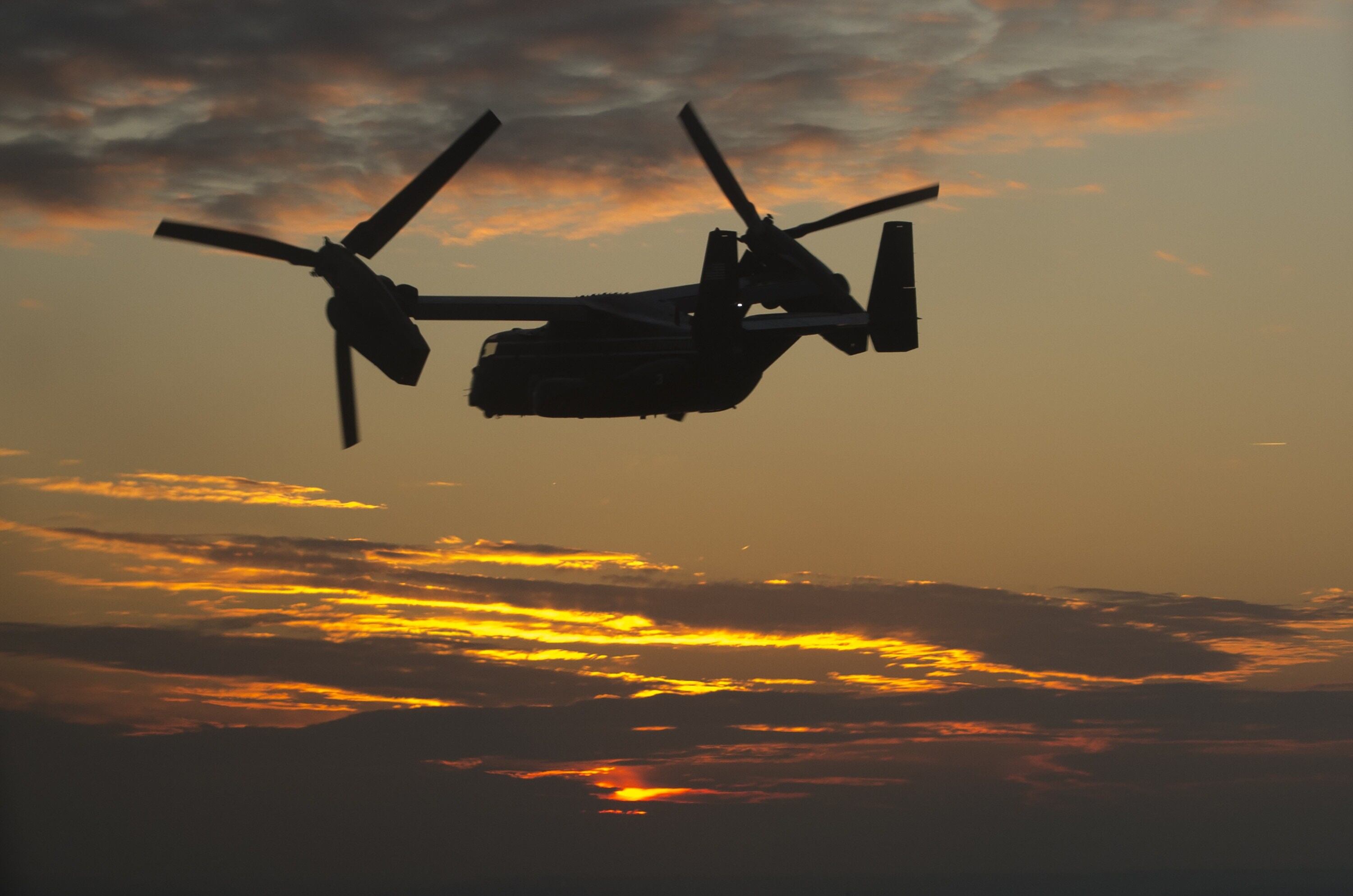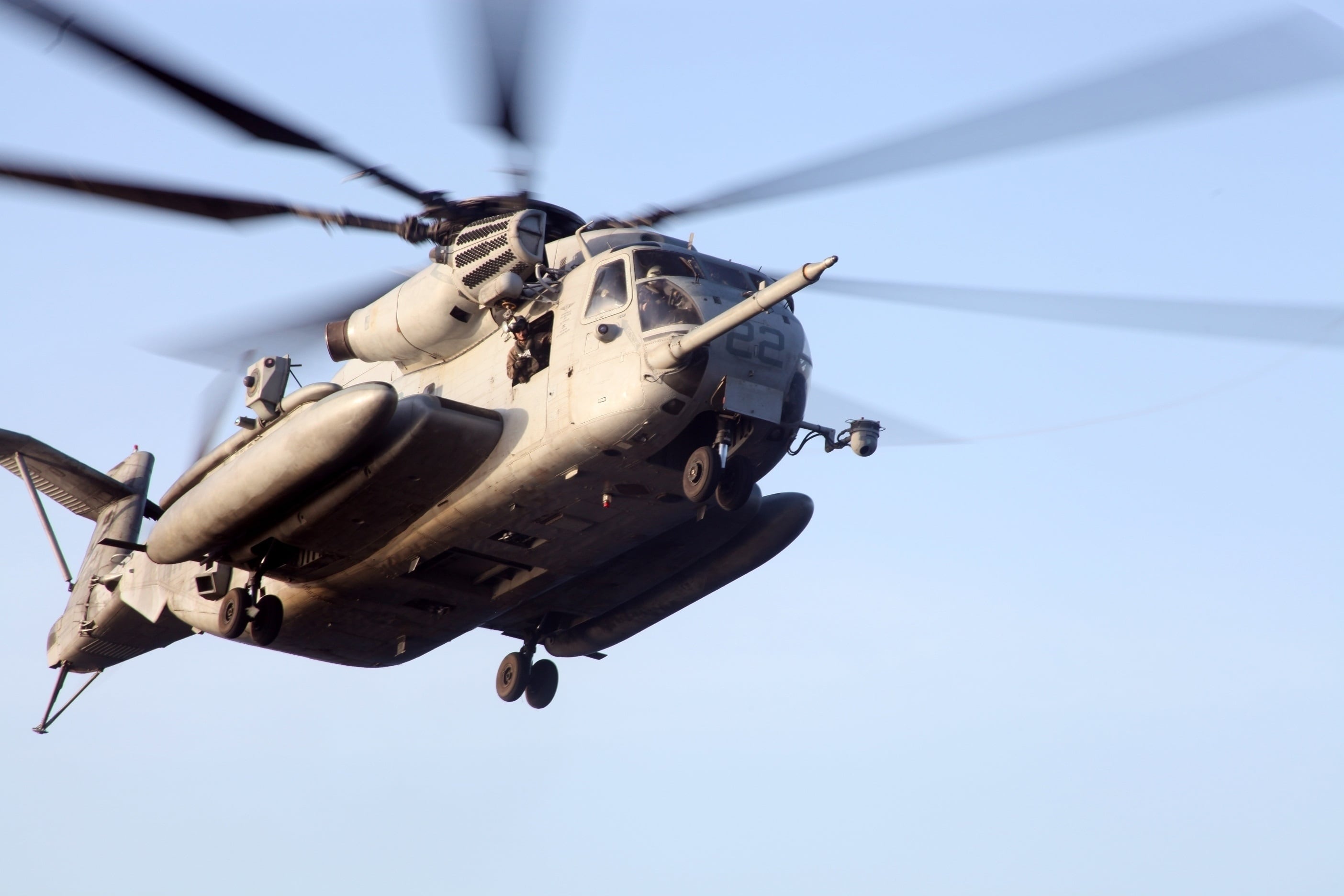A series of planning mistakes resulted in a CH-53E Super Stallion helicopter’s main rotor hitting a building during a simulated raid in October, an investigation into the incident found.
“Previous experience with this LZ resulted in complacency and a lack of due diligence with respect to creating the landing plan,” according to a redacted copy of the investigation obtained by Marine Corps Times through a Freedom of Information Act request.
One Marine Corps Forces Special Operations Command Raider aboard the helicopter suffered a concussion and lower back injury after he and three other Raiders removed their safety harnesses before landing, the investigation found.
The exercise took place on Oct. 20 near Yuma, Arizona, during the Weapons and Tactics Instructors Course, the investigation says.
A total of 21 people were on board the helicopter at the time of the mishap: Two pilots, three enlisted aircrew, four Marines from the 1st Raider Battalion, six Marines from the 8th Engineering Support Battalion and six Marines from Marine Wing Support Squadron 372.
RELATED

The CH-53E was one of three helicopters that was supposed to land in a mock combat town on a mission to practice capturing a high value target, the investigation says. Day and night practice runs were planned.
“It was a varsity mission, one that required detailed planning to ensure appropriate risk mitigation was in place,” Col. Chad Blair, then commander of Marine Aircraft Group 16, wrote in his first endorsement of the investigation.
But Blair cited “a breakdown in mission planning that is underpinned by inattention to detail” that led to the pilots and aircrew being unaware that a building was 117 feet from where they were supposed to land, or that the building had a tower that was 29 feet tall.
“When the aircraft rotor blades impacted building 29, the entire aircrew was caught off guard,” Blair wrote. “They had planned for and were keenly aware of the cactus and blowing dust in the zone, but they were not aware of the structure immediately in front of them.”
Blair lauded the pilots and aircrew for getting the stricken helicopter on the ground and making sure everyone on board got off safely, adding, “There is no evidence of negligence or disregard for the policies and orders that govern flight operations.”
RELATED

One of the pilots logged 51.9 flight hours in the 30 days leading up to the mishap, and 60.4 hours in the 90 days prior. The other pilot logged 49.1 hours in the 30 days ahead of the incident, and 106.6 hours in 90 days prior, the investigation says. With the redactions, it is unclear which pilot was the aircraft commander.
The investigation found that the CH-53E should not have been cleared for the mission because its Forward Looking Infrared needed to be repaired. The system, a requirement for night flying, failed during the mission and could have prevented the mishap if it had been working properly.
The raid planners also failed to conduct an analysis of how far the buildings in the combat town were from the landing zones. The landing zone diagram being used inaccurately depicted the landing point and used imagery that was not high quality enough to measure distances to obstacles. None of the helicopters landed where they were supposed to, the investigation found.
Moreover, the four Marine Raiders aboard the helicopter who took off their safety harnesses also stood up 30 seconds before impact, despite their request to do so being denied before the mission, according to the investigation.
“The decision by the MARSOC Marines to remove restraint systems prior to landing showed a disregard for both a directive from Marine Raider Regiment and from the aircrew of METAL 44 [the helicopter],” the investigating officer found. “It is only luck that prevented those four Marines from sustaining serious injury.”
The investigating officer recommended that nine Marines be evaluated for possible administrative or disciplinary action, including the four Raiders and the person who cleared the helicopter for the night mission.




